- Home
- Harlan Ellison
Over the Edge/An Edge in My Voice
Over the Edge/An Edge in My Voice Read online
Over The Edge
Stories From Somewhere Else
by Harlan Ellison
For Bill Rotsler
With wondrous thanks for
thousand of lines, not the
least of which was—
CONTENTS
FOREWORD: THE FRONTIERS OF EDGEVILLE BY NORMAN SPINRAD
INTRODUCTION: BRINKMANSHIP BY HARLAN ELLISON
PENNIES, OFF A DEAD MAN’S EYES
THE END OF THE TIME OF LEINARD
3 FACES OF FEAR: AN ESSAY
BLIND LIGHTNING
WALK THE HIGH STEEL
SHADOW PLAY
THE WORDS IN SPOCK’S MOUTH: AN ESSAY
FROM A GREAT HEIGHT
NIGHT VIGIL
XENOGENESIS: AN ESSAY
ROCK GOD
AH-WEGH THOGHA
ERNEST AND THE MACHINE GOD
FOREWORD: The Frontiers of Edgeville BY NORMAN SPINRAD
Twenty-five years ago, when I wrote the original foreword to the original edition of OVER THE EDGE, I began by saying that it “seems to be more or less of a collection of science fiction stories by Harlan Ellison, but it doesn’t wear the categorization very comfortably.”
Twenty-five years on, that is even more true, and not just because the book has been updated and its table of contents somewhat altered.
Twenty-five years on, it is quite clear that Harlan Ellison has long seemed to be more or less of a science fiction writer, but doesn’t wear the categorization very comfortably, and in retrospect, as this collection of mostly earlier works makes clear, never has.
In fact, the only pieces here that are unequivocally science fiction are “Blind Lightning” and “Night Vigil.” “Pennies, Off a Dead Man’s Eyes,” “Shadow Play,” “Rock God,” and “Ernest and the Machine God” are the sort of contemporary fantasy stories that have long been sloppily classified as science fiction simply because both genres have long been published in the same places under the same logo, SF.
“The End of the Time of Leinard” is a western story. “Walk the High Steel” and “From a Great Height” are pieces of mimetic contemporary fiction. “3 Faces of Fear” is a piece of extended film criticism. “The Words in Spock’s Mouth” is a polemic on writing for television. “Xenogenesis” is a polemic-cum-memoir of the author’s (and many others’) bruising life and times with the subculture of science fiction fandom.
The point of classifying the contents of OVER THE EDGE being that even twenty-five years ago, the contents of this book reflected rather accurately not only the multiplex aspects of Ellison’s oeuvre at the time, but what was to come.
In point of fact, in terms of its proportionality to the total body of his work, Harlan Ellison has written comparatively little that is really science fiction by any meaningful definition. Nor has his science fiction, with the notable exception of A Boy and His Dog (and its separately-published other sections, all parts of the unpublished, but much anticipated long novel, BLOOD’S A ROVER), really been his strongest work, or central to his creative core.
Indeed he has probably published more short fiction—like “The End of the Time of Leinard,” “Walk the High Steel,” and “From a Great Height”—that is not even remotely “speculative” by any definition than he has actual science fiction.
As “3 Faces of Fear” and “The Words in Spock’s Mouth” make clear, Ellison has long been involved in film and television as a screenwriter and critic. “Rock God” was written with comic book adaptation in mind, another form Ellison was to become fairly heavily involved in as both creator and critic later on. (He now has his own ongoing comic book, Harlan Ellison’s Dream Corridor, published by Dark Horse Comics.)
“Xenogenesis” gives us a primo example of Harlan Ellison the famous polemicist, heir to the sulfuric tradition of Mark Twain, H.L. Mencken and Ambrose Bierce.
All of which is to say that Harlan Ellison from the very beginning was a writer of wide range and scope whose straightforward “science fiction” was only a minor part of his evolving body of work. Nor has that changed at all in the succeeding twenty-five years since the original publication of OVER THE EDGE.
Yet to his despair, chagrin, and ire, and despite his mighty polemical efforts to the contrary, Ellison has been and continues to be known as a “science fiction writer.”
Why?
Therein lies a tale.
In my foreword to the original publication of OVER THE EDGE, I devoted much attention to the “New Wave” phenomenon of which both Ellison and I were central figures at the time. Much of its relevance to the subject at hand may have faded with the white heat of the cultural war of which it was a part, and therefore bears no repeating here, but some of it remains quite to the point.
“Speculative fiction” was what we were trying to have our New Wave stuff called in those days, first because the term was more inclusive, second because it sounded tonier in the literary salons to which we aspired, and third, to hedge our bets when it came to getting it published, since it could still lay commercial claim to the initials SF.
And as I said then, the elusive essential nature of “speculative fiction” is somehow bound up with both the chameleonlike quality of this book and that of the author thereof.
In those days (and even today) the typical “sf” writer wrote “sf” almost exclusively and published most of it in the science fiction specialty magazines and the sf lines of book publishers. Then, and even more so today, Harlan Ellison did not at all fit this profile.
Today, when the same can be said of writers of science fiction or speculative fiction as diverse as J.G. Ballard, Michael Moorcock, Brian Aldiss, Michael Crichton, William Gibson, Ursula K. Le Guin, Kate Wilhelm and yours truly, among many others, we must be reminded that Harlan Ellison was perhaps the first to have “broken out” of the “sf genre” at the very same time he was breaking in.
Back then, I declared that this made Harlan Ellison a “New Wave” writer, but while that is still true, what I said after that would seem to have remained more germane: “Harlan Ellison, in fact, was a ‘New Wave’ speculative writer before there was a ‘New Wave’.”
I linked Ellison to Kurt Vonnegut, Jr., William Burroughs, Anthony Burgess, George Orwell, Aldous Huxley, and J.G. Ballard, all of whom wrote some speculative fiction, but not exclusively, all of whom wrote with absolute literary goals in mind, and all of whom were doing it before 1965, when the New Wave was not even a gleam in Michael Moorcock’s eye.
“The so-called ‘New Wave’ is nothing more esoteric than science fiction undergoing a process of transformation from a commercial genre to one more branch on the family tree of literature,” I wrote then.
Right on! I say to that now.
Nor can I say it any better now than I did then:
“Ellison was the first ‘New Wave’ writer…who had emerged from the old science fiction of fandom, hackwork, and the pulps. Moreover…Ellison had to work the transformation without a roadmap, without a peer group, without reliable literary criticism, perhaps even without any clear picture of what kind of literary genre he was departing from, where he was going, or why he was doing it.”
For a clear contemporary take on what a heroic and ambiguous escape act that really was and still is, read “Xenogenesis” and observe the slobbering seductive sucking sounds of that fannish quagmire in action.
“At a time when most science fiction was written by professional science fiction writers who wrote science fiction almost exclusively, Harlan Ellison was producing science fiction, mystery fiction, mainstream fiction, teleplays, film and music criticism…”
Why then is Harlan Ellison even now still so frequently referred to as a “science
fiction writer?”
Well:
“The literary marketplace of the day tended to keep the many facets of Ellison’s work compartmentalized. An important theme of much of Ellison’s mainstream fiction was (and is!) the variety of male-female relationships, a subject which the science fiction markets of the 1950s and early 1960s would not touch with a six foot pole. Similarly, the ‘mainstream’ markets of the 1950s tended to consider any story with a speculative element ’greasy kid stuff.
“Even in those days, Harlan Ellison was primarily a writer of fiction whose muse led sometimes to fiction with a speculative element and sometimes to fiction without a speculative element….
“But when a speculative element merged in his work with mainstream psychological depth and seriousness of literary purpose: Ellison tended to produce the kind of fiction that would come to be called…‘speculative fiction’.”
And this, my present self would contend, is the heart of his work.
Though Harlan Ellison has written a few novels, he has never been primarily a novelist. And though he has written hundreds of short stories, and particularly many classics of contemporary fantasy at this length, his natural form seems to be the novella and the novelette, short enough to maintain his compression and drive, long enough to give him scope to develop character, background, and novelistic form.
And while some of his best work has been in the novella and novelette of contemporary mimetic fiction, there has not been that much of it, and Ellison’s strongest work has always been his contemporary fantasies at this length, well-represented here by two of his classics, “Pennies, Off a Dead Man’s Eyes” and “Ernest and the Machine God.”
But while the novelette and the novella are in many ways ideal forms in a literary sense, they are damned difficult to get published. In fact, for the last two or three decades at least, there was only one venue where novelettes and novellas of any kind were, and are, regularly published.
You guessed it: the sf specialty magazines and anthologies.
Further, up until at least the middle of the 1960s, fantasy was a no-no even there. So the only reliable way of getting novellas and novelettes published was to include a speculative element and, if it was fantasy rather than science fiction, gesture hypnotically at the editor and invoke the all-purpose acronym SF.
And that is how Harlan Ellison, who has written more mainstream stories than actual science fiction, and who is arguably the best and most prolific author of novellas and novelettes that Anglophone letters has produced, and certainly when it comes to contemporary fantasy, has made a reputation which he is probably never going to be able to shake as a “science fiction writer.”
And yet, all of the above having been said and the New Wave wars having passed into history, it is still literarily just to say that Harlan Ellison is a writer of speculative fiction at heart; that just as his screenplays, criticism, polemics, and mainstream fiction have effected and deepened his contemporary fantasies, so has his permanent speculative state of mind permeated all he has written, “speculative fiction” by taxonomic definition or not.
Paradoxically, it is that very state of mind which has annihilated such Talmudic distinctions, which has broken down the ghetto walls in the mind of a kid from Cleveland who grew up within science fiction fandom, and in the end allowed the positive feedback loops among all the areas of Ellison’s creative interests to make him precisely the writer that he has become.
You can see it happening right here in this book.
“Pennies, Off a Dead Man’s Eyes” is a good example of how Ellison frequently uses a speculative element as a minor element in a story whose major focus is elsewhere; here on the relationship among the protagonist, the dead man, and the dead man’s daughter.
It is true that in those days (and even today) many science fiction and fantasy writers used this technique to sell basically non-speculative stories to the genre magazines which were the only markets buying their work.
But just as the Harlan Ellison of the 1950s and 1960s was a forerunner of the sort of writers of speculative fiction of the 1980s and 1990s who are now accustomed to seeing their varied works appear in a variety of publications, so too was he a kind of throw-back to the pulp writers of the 1940s and 1930s, who, presented with a wide variety of magazines publishing a wide variety of fiction, wrote everything from westerns to mysteries to science fiction and beyond.
For while the golden age of the pulps was at least a decade and a half gone by the time Ellison started writing, he nevertheless was publishing a wide variety of fiction all along, science fiction, fantasy, even a western like “The End of the Time of Leinard,” including many straightforward mainstream stories like “Walk the High Steel” and “From a Great Height.”
For the most part, he was publishing his “non-sf not in the mostly vanished pulps, but in the slick men’s magazines, particularly Knight and its various sister magazines, with whose editor, Jared Rutter, Ellison had a close creative relationship, and which eagerly published both his speculative fiction like “Ernest and the Machine God” and his straightforward mainstream fiction like “Walk the High Steel.”
The point being that since Ellison didn’t have to inject a minor speculative element into otherwise basically mainstream stories in order to get them published, he must have had his literary reasons for working so often in this mode.
After all, why not? If love could be a minor element in a speculative story, why couldn’t a speculative element be a minor element in a love story?
But in order to make either such sort of story work, a writer would have to be capable of handling both the speculative and psychological elements. And while there are many writers doing that quite regularly now, they all owe a large literary debt to Harlan Ellison, for much before the middle of the 1960s, such writers were few and far between, to the point where he was almost a lone pioneer.
So too the cyberpunks in at least one aspect, for while Ellison may be one of the least cyber guys around—still working on a manual typewriter—the punk aspect derives pretty much from what he was doing as far back as the middle 1950s.
For another thing that Ellison was doing early on, in straight adventure fiction like “Walk the High Steel,” in unclassifiable stories like “From a Great Height” and even in contemporary fantasy like “Ernest and the Machine God,” was bringing (for want of less politically-loaded terms) working-class protagonists and hustlers front and center. And dealing centrally with their actual work and scams.
Which is at least half of what makes cyberpunk cyberpunk.
Which is to say that virtually from the beginning of his career, Ellison was free from the trap of thinking in literary categories. The earlier Ellison demonstrated this by writing a wide range of stories in a wide range of genres, the more mature Ellison by often exhibiting the same range within a single story.
Ellison draws freely on speculative and non-speculative elements within any given story. Sometimes the speculative element stands in a corner, as in “Pennies,” sometimes it sets up a human situation which could not exist without it, as in “Ernest and the Machine God,” sometimes it is front and center, as in “Shadow Play” or “Blind Lightning” or “Night Vigil” or “Rock God.” Sometimes it comes in the guise of fantasy, sometimes science fiction.
Frequently, as in “Walk the High Steel” and “From a Great Height,” one may read the whole story in anticipation of its emergence, only to find at the end that it works quite nicely, thank you, without any speculative element at all.
And that is one of the charms of reading any given Ellison story for the first time: you can never anticipate in what direction it will go next; speculative, mimetic, psychological, theological, whatever.
Nor, as “3 Faces of Fear,” “The Words in Spock’s Mouth,” and “Rock God” make clear, is Ellison’s prose fiction the whole of the story.
“3 Faces of Fear” will introduce you to Harlan Ellison’s critical writing, which has encompassed fiction
, politics, music, cultural affairs, television, and cinema. Some very good fiction writers are incapable of writing criticism, just as some very good critics cannot do creative work. Again, a demonstration of Ellison’s range.
But more, “3 Faces of Fear” is neither academic criticism nor “popular” film reviewing; this is criticism that only an active practitioner of fiction could produce. For in his critical writing, Ellison utilizes all the methods of the fiction writer: evoking memories, visualizing scenes, recounting anecdotes, appealing to the senses. This is why you will enjoy reading it even if you have no interest in cinema, no interest in criticism, and no interest in the anatomy of fear.
It will also remind you, and “The Words in Spock’s Mouth” even more so, that Ellison’s work is not confined to the printed page, that he has followed a parallel career in screen writing all along, and that, unlike so many craftsmanlike practitioners of the screenwriter’s trade, he has brought his passions and serious intent with him.
Even something like “Rock God,” admittedly not Ellison at the top of his short story form, reveals in its genesis and execution how Ellison’s various aspects as a creator synergize with each other in a positive sense.
“Rock God” was written with comic book adaptation in mind (Ellison has since written quite a bit directly for this form) and therefore suffers to some extent from a lack of psychological depth. But in the first half of the story, Ellison deals with this problem nicely by giving us the events as if he were writing a screenplay treatment. This enables him to engrave the larger-than-life mythic image of the Rock God on the Reader’s mind using the visual techniques of film and comic book art in order to use that image as a mythic image in the second half of the story.

 Repent, Harlequin! Said the Ticktockman
Repent, Harlequin! Said the Ticktockman Broken Glass
Broken Glass Other Glass Teat
Other Glass Teat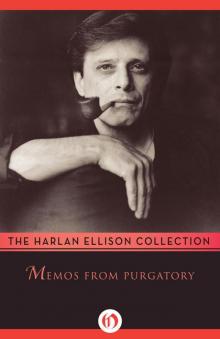 Memos From Purgatory
Memos From Purgatory I Have No Mouth and I Must Scream
I Have No Mouth and I Must Scream The Deadly Streets
The Deadly Streets The Glass Teat
The Glass Teat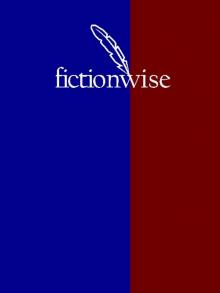 Paingod and Other Delusions
Paingod and Other Delusions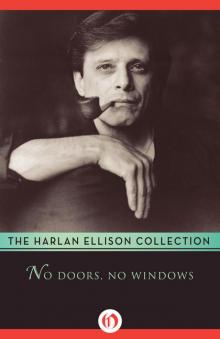 No Doors No Windows
No Doors No Windows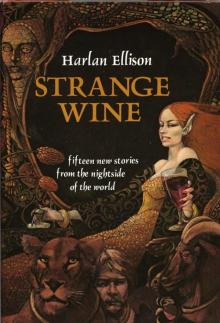 Strange Wine
Strange Wine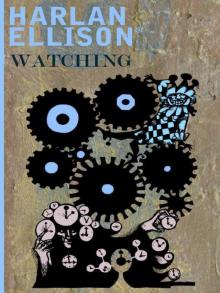 Harlan Ellison's Watching
Harlan Ellison's Watching Over the Edge/An Edge in My Voice
Over the Edge/An Edge in My Voice Troublemakers: Stories by Harlan Ellison
Troublemakers: Stories by Harlan Ellison Gentleman Junkie and Other Stories of the Hung-Up Generation
Gentleman Junkie and Other Stories of the Hung-Up Generation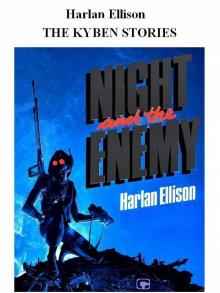 The Kyben Stories
The Kyben Stories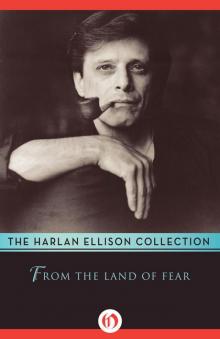 From the Land of Fear
From the Land of Fear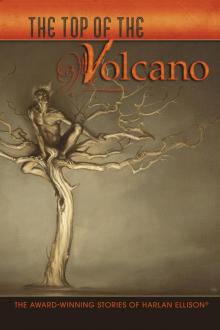 The Top of the Volcano: The Award-Winning Stories of Harlan Ellison
The Top of the Volcano: The Award-Winning Stories of Harlan Ellison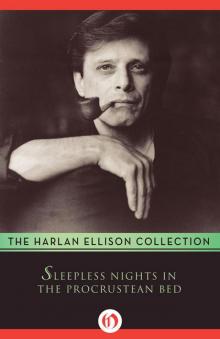 Sleepless Nights in the Procrustean Bed
Sleepless Nights in the Procrustean Bed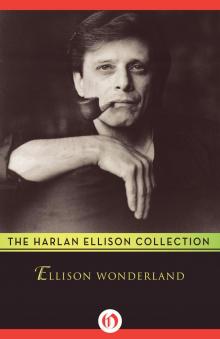 Ellison Wonderland
Ellison Wonderland Children of the Streets
Children of the Streets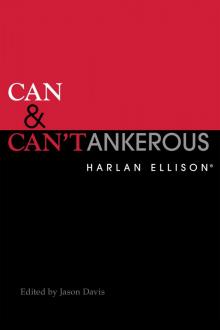 Can & Can'tankerous
Can & Can'tankerous Love Ain't Nothing but Sex Misspelled
Love Ain't Nothing but Sex Misspelled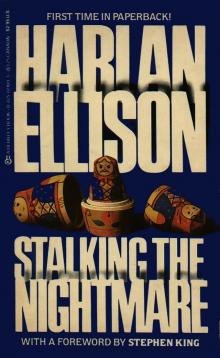 Stalking the Nightmare
Stalking the Nightmare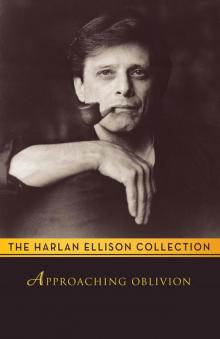 Approaching Oblivion
Approaching Oblivion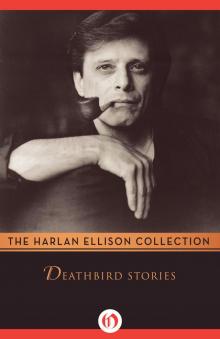 Deathbird Stories
Deathbird Stories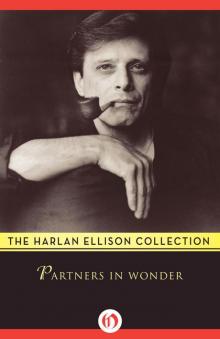 Partners in Wonder
Partners in Wonder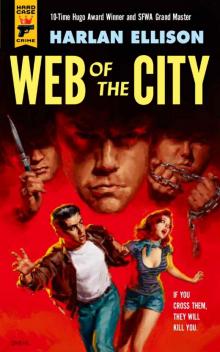 Web of the City
Web of the City Spider Kiss
Spider Kiss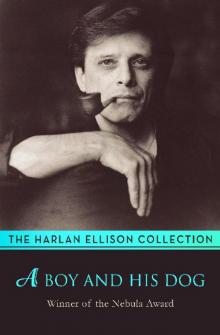 A Boy and His Dog
A Boy and His Dog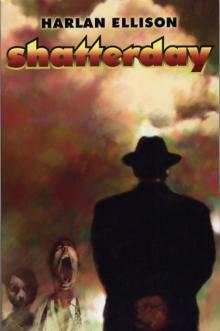 Shatterday
Shatterday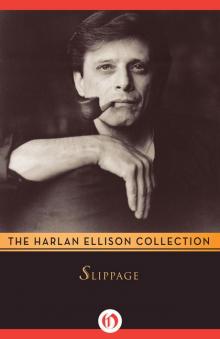 Slippage: Previously Uncollected, Precariously Poised Stories
Slippage: Previously Uncollected, Precariously Poised Stories Repent, Harlequin! Said the Ticktockman
Repent, Harlequin! Said the Ticktockman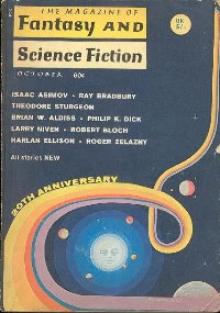 Come to Me Not in Winter's White
Come to Me Not in Winter's White The Song the Zombie Sang
The Song the Zombie Sang The Other Glass Teat
The Other Glass Teat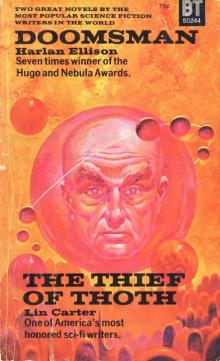 Doomsman - the Theif of Thoth
Doomsman - the Theif of Thoth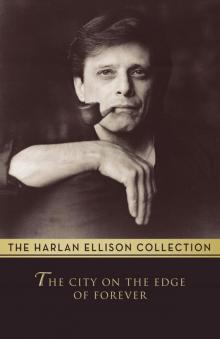 The City on the Edge of Forever
The City on the Edge of Forever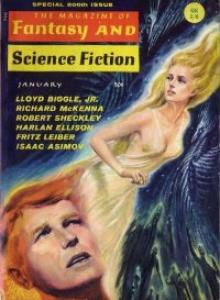 I See a Man Sitting on a Chair, and the Chair Is Biting His Leg
I See a Man Sitting on a Chair, and the Chair Is Biting His Leg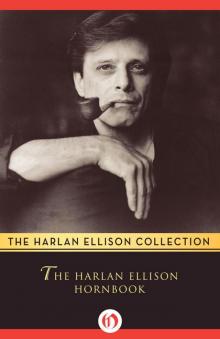 The Harlan Ellison Hornbook
The Harlan Ellison Hornbook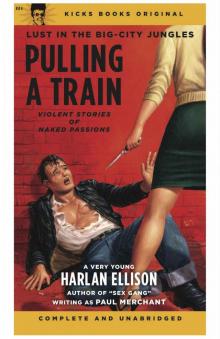 Pulling A Train
Pulling A Train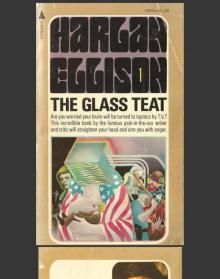 The Glass Teat - essays of opinion on the subject of television
The Glass Teat - essays of opinion on the subject of television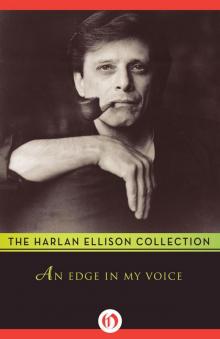 An Edge in My Voice
An Edge in My Voice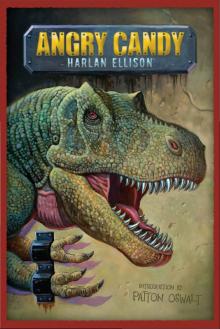 Angry Candy
Angry Candy Troublemakers
Troublemakers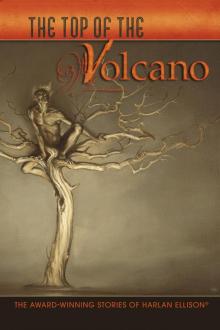 The Top of the Volcano
The Top of the Volcano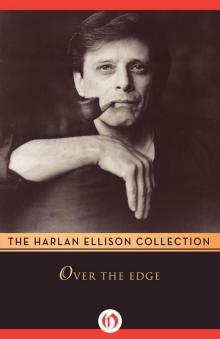 Over the Edge
Over the Edge Survivor #1
Survivor #1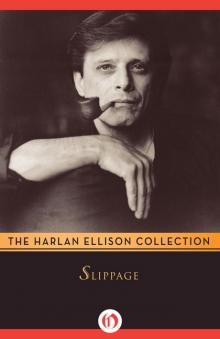 Slippage
Slippage